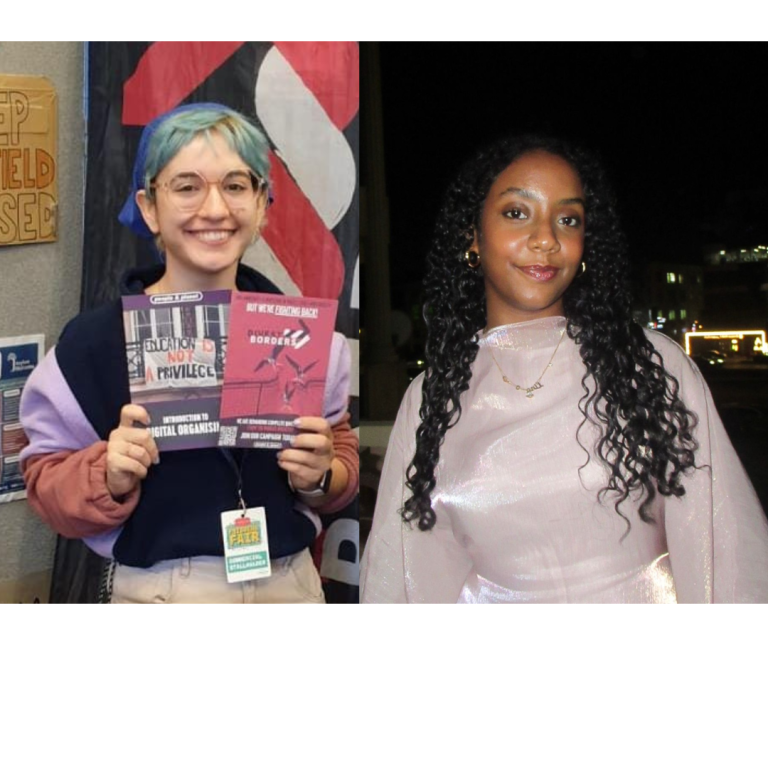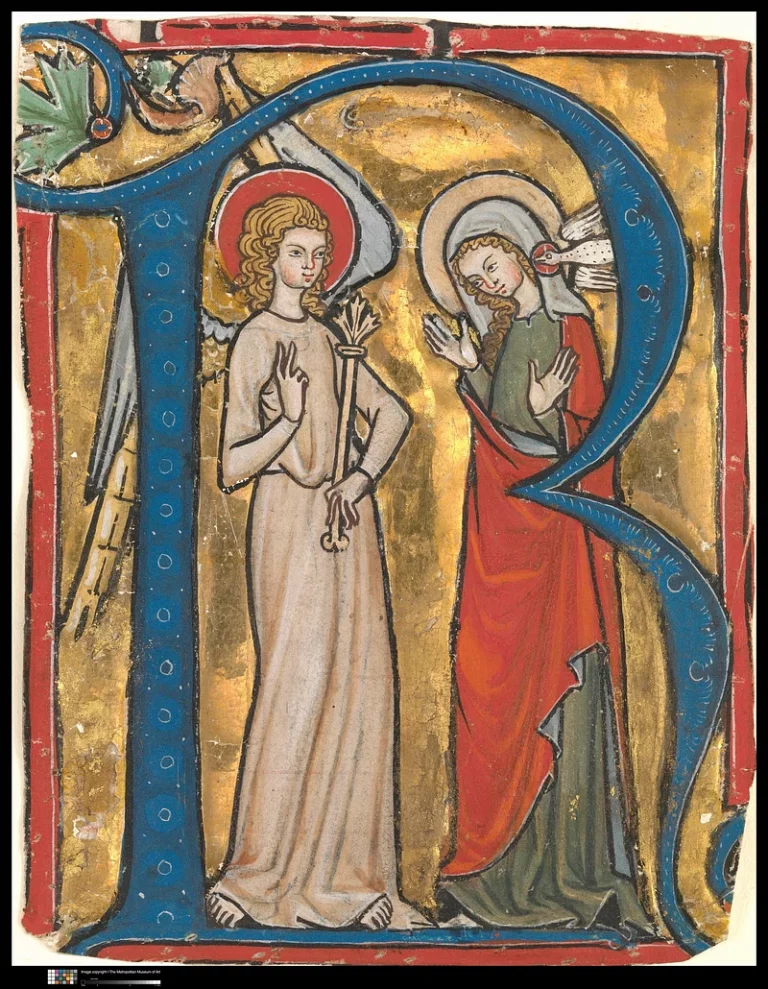Acclaimed actor, writer, comedian, and new Visiting Professor of Creative Media Sir Stephen Fry spoke to Cherwell about his career, future plans, and relationship to mythology.
Cherwell: I thought I’d start off by mentioning that you’re now Sir Stephen Fry. Has life been different since the New Year Honours? Have people started asking what they should call you?
Fry: My skin is the same skin and my hair is the same hair. Some people, I wouldn’t say treat you differently exactly, but there is a sense of it. One’s first response as a British person, therefore trained in the art of modesty and not appearing cocky or pleased with oneself, is to say, “Oh no, don’t bother with any of that.” Then you realise that some people really enjoy calling you by your title and they’re a bit disappointed if you tell them not to. So you just sort of let it happen.
But also, I suppose there is a sense in which people feel that you are somehow slightly less of a person and more of an institution than you were before. And maybe that means that they can call upon your time a bit more and call upon your good nature for causes. I mean, this is not a complaint, I hasten to add. It’s a charming and extraordinary thing. If you’re going to accept it, enjoy it and use it, I suppose.
Cherwell: I’ve got a couple of questions about your book The Fry Chronicles, which I love. I’ve been involved a little bit with student drama and I think it’s so interesting to see how it maps onto all my experiences, although not to the same extent.
Fry: I must reread it and find out what I said.
Cherwell: I’ll read you some of the quotes now. You said that you and Hugh Laurie “shared a horror of cool […] any such arid, self-regarding stylistic narcissism” you “detested”.
Fry: Goodness!
Cherwell: I was at your talk on Friday and I found it really interesting, the stuff you were saying about introducing playfulness into modern discourse, and that the 20th century was the century of Orwell and Hemingway. How would you connect those two ideas, that rejection of stylistic narcissism and that idea of playfulness?
Fry: Well, I think they are connected to some extent. ‘Cool’ people wear mirror-shades and they wear metaphorical shades too. It doesn’t allow for playfulness and cheerfulness. It’s heavy, it’s cynical, it’s dark, it’s doubtful. I’m not saying everybody was like that in the 20th century or that everyone was like Hemingway, far from it! Silliness abounded, surreal and odd and totally playful things, much more playful than we ever were. I suppose there is a separation. When I was talking about floridity and playfulness in language, I was thinking much more about the written word than I was in comedy, because comedy takes on so many different discourses and languages.
It was [also] so interesting, the language I used when you quoted me, “we absolutely hated”. I think I was at the stage of a student, where one is so intolerant of certain points of view, of pretension and of whatever we decide is the wrong side of us. We decided that ‘cool’, and people who tried to be cool and cynical, were the wrong side of us. Part of it is that Hugh and I [had] spent quite a bit of time inhabiting businessmen and the talk they had, which was pretentious and self-aggrandizing and trying to be ‘cool’ just by dropping the jargon of business. We found that funny, but also it needed slapping.
You have to have arrogance as a comedian in the same way you do as a writer. One of the primary arrogances of any writer is to assume that their experience is general and worth sharing because people will go, “yeah, I feel that too”. Of course, it is the primary weapon of comedy, particularly stand-up observational comedy. In terms of queer literature, someone like Alan Hollinghurst is quite eye-wateringly frank, because he’s assuming that he’s not entirely alone in this and he’s reporting from the frontline of the gay experience. He’s basically saying, “I’ve done this, I’ve felt this, I’ve wanted this” or “I’ve not wanted this”. And then he appears at the Hay Festival, chatting, and you think, wow – that’s actually brave. That’s an extreme example because it involves sex and that’s the obvious thing that we might be ashamed of, but it’s also true in just the things we do in everyday life.
I suppose the more comedy does that, the better it is, the less it’s a cliche, and the more it makes you laugh but then also go “Oh fuck, that’s me”. People use the word ‘targets’ straight away with comedy, don’t they? Which they don’t with novels or poems. “When you write a poem, what’s your target?” [laughs] The way ‘target’ would be used would be your ‘target audience’. But with comedy, you say “What’s your target?” You think of comedy as a weapon.
Cherwell: I’d like to pick up on something you said, especially writing about sex. I thought with your early writing, Latin! Or Tobacco And Boys and also The Liar, sex obviously plays a huge part. Also I remember from The Fry Chronicles your article on abstinence in Tatler magazine, Don’t Do It, which you said caused you subsequent chagrin.
Fry: I was tarred with that brush for 15 or 20 years. I suppose I wrote about it when I was young-ish because it was close to my memory as a teenager, the desire and the occasional experience. But then I did have a 15 year period in which I was completely sex free. It just was a mixture of fear, embarrassment, and a sense that the gay world was not for me. I didn’t like gay clubs: the music and being raked by eyes when you went into an establishment. Part of it was simply the fact that AIDS was around and that sex was terrifying. A relatively large number of people from my college and from the university, I was going to their funerals or I was sitting at their bedside and seeing emaciated near-corpses. So I had every reason to back away from it as both a subject and as a pastime.
But when I was young, when I wrote my first novel The Liar, I thought being a writer meant you could shock people and that was a good thing to do. The Liar was quite out there. I haven’t read it for decades. It’s very hard to explain to you what it is to be at an age when you can look back on a book you’ve written that seems a lifetime ago. It’s an awfully old man thing to say, but it’s unavoidable.
But yeah, sex, I mean obviously it was satirical. It was about the whole English private school thing, Latin!, and you couldn’t do that now, because its ironies and its satirical intent look too sympathetic, in a way, which I don’t think it was, but you can’t make jokes like that and that’s fair enough.
Cherwell: In terms of your more recent writing, Odyssey recently came out. You’ve always managed to stay relevant with subsequent generations; obviously the Harry Potter audiobooks, which you narrated, were a huge thing for people of my generation, but now with Mythos and Odyssey and retelling the Greek myths in that way. Is that a conscious decision or is that a desire always to educate and to explain?
Fry: I think Cyril Connolly, the great mid-century critic and literary lion, wrote a book called Enemies of Promise, in which he said people who had private education in the 20th century, like me, were stuck in permanent adolescence. And to some extent when writing books, part of me thinks my natural audience should be the self that I got locked into when I was about 15 or 16.
So when retelling the stories of Greek myths, I did have in my head myself, I thought, what would I like to have read? There were books that I’d read when I was 10, which were just for children, books about myth that were very good, but they were definitely for children. Or there was Robert Graves who wrote his Greek myths for adults that were very, very adult, full of footnotes of great scholarly learning, though he did a children’s version of them as well. But I thought you really want to write them for teenagers, young people, who are bright and who can take a bit of violence, ambiguity, doubt and all the things that the proper stories have. Older people enjoy them and younger people kind of get them too. So I think they are the perfect sweet spot for stories of that nature.
Henry Oliver, who’s a very good literary critic [and] writes a really excellent Substack, wrote a very good one about what he called the ‘discourse novel’. In [that], he said the problem with writing a novel now, set in the present day, is [that] it is impossible for it not to swim in the water that we now have. That’s to say every character has a point of view as regards to gender, race; ‘the discourse’. You can’t avoid it.
One of the beauties of writing in myth is that you are stripped of that. You can write about honour, revenge, love, incest, power, all the different and difficult things that are primal to human interaction, but they’re stripped of today’s discourse. They are kind of about these eternal things. This is something that Wagner explained [in] his Gesamtkunstwerk, his ‘music dramas’, is that he set them deliberately in worlds of myth. Because the moment someone in a soldier’s uniform walks on, it’s “What country is the uniform? What sort of soldier are they? Are they imperial? Are they this? Are they that?” Everything is coded. If you set it in myth, it’s stripped of it.
But if you want stories that are about fear and heroism and failure and honour – how can you write about honour today? You’re writing about honour killings? Well then, you have to be someone who comes from a culture where honour killings exist. I don’t have the right to write a story about a Pakistani family who have an honour issue, or an Italian family that have an honour issue, because in Britain, amongst people of my background it doesn’t exist as a subject, but it exists in Greece hugely.
And if you want to write about religion or about fear of gods, I can’t write from a Christian point of view without offending Christians, pretending a Christian view or being satirical of a Christian view. And I certainly can’t write from a Muslim point of view or a Jewish point of view, even though I am half Jewish, I wasn’t raised in the Jewish tradition, so I don’t know anything about it really. But if you set it in a world of gods like the Greek gods, then no one is offended. If I show the cupidity and caprice and unfairness and lust of Zeus, no one’s going to say “How dare you! How dare you do that!” But instead one is writing something very powerful from the collective unconscious of our ancestors about the unfairness and capriciousness of the world, and it frees one, I suppose is what I’m saying.
When I wrote the first [book], Mythos, not long afterwards suddenly there was Madeline Miller, [the] American novelist who retold the story of Achilles and Patroclus in a novel called The Song of Achilles. Then Cersei, the enchantress who turns Odysseus’ men into swine. Then Natalie Haynes, Bettany Hughes; Emily Wilson comes up with a new translation of the Odyssey, and Pat Barker writes The Silence of the Girls from the point of view of the women in the Trojan War story. Suddenly it became a whole genre again. Suddenly as well, there are new classical schools opening in universities and so on, and classical societies. I’m getting a lot of letters from girls and boys and young men and young women who are really interested in the classics. Some of them say I have helped them to that, but a lot of them have found their own way there. And I’m wondering if it isn’t for the same reason that it is a liberating world to step into, that allows you the full access to all human feeling without being strangled or caught in the weeds of what is just something that affects us now.
Because morals, as I’m sure you know, comes from the Latin word mores, it’s to do with manners, with customs. Morals are not eternal verities. They’re what we think of as right now. Whereas there are eternal truths about how humans behave, which we can play with and examine and be enchanted by and terrified by and feel the truth of. And myth provides those.
Cherwell: To take a retrospective view on your career, you’ve obviously worn many hats, I’d say famously so. Do you ever wish you tried to focus your energies on one thing? I get the sense that even at an early point, you knew you would be a diverse and spread person.
Fry: A jack of all trades and master of none, you were too polite to say it. Often I think about the alternative lives I could have led, in the way that all people do the older they get. The one I picture most is one in which I would’ve had a house in the country: not necessarily a grand house, certainly not Downton Abbey or anything, but enough to have hens who laid eggs and that every year I would make pickles and jams and that my only career would be a writer. And I would write a book a year. Of course, it’s total fantasy. I’m not like that at all, but it is one that’s appealing. When I’m in the middle of the city and I’m in the middle of “Oh God, it’s six in the morning and I’m standing in a field with a camera doing a documentary or a film or something” and I could be in this nice cosy world.
Occasionally I’m on a film set and I’m with a brilliant film actor, and I think “That’s all they do.” It’s a bit like the thing that we’ve all had, which is when you wake up in the morning and remember you owe money somewhere, that feeling is essentially from the same part of the brain: owing money, to wake up in the morning saying “I don’t know how I’m going to pay it.” It’s like that with the work, “How am I going to write, if I tell them now it’s going to be late they’re going hate me and I’ve got to deliver it, but I don’t know where to start.” That’s what a writer lives with all their lives. An actor lives with other anxieties and terrors, of course, not getting cast and not feeling good enough. But it isn’t quite the same thing as that nagging, nagging, nagging that writing has.
Why didn’t I only do that? It’s a very long answer, I’m sorry, I could have said it much more compactly. It’s an incredible privilege to do lots of things in a life because it’s a small thing, a life. It doesn’t last long. And you might as well cram, as Oscar [Wilde] put it in various ways, you should taste the fruit of every orchard in the world and some will be bitter and sour and some will be so sweet that you become addicted to them and so on. But nonetheless, it’s a duty to this bountiful and extraordinary world that we sample as much as we can.
I’m not saying you should overdo anything obviously, but to try to sample as much of the world as you can is a great thing. And to have an opportunity to travel and do things and be paid and to have different hats as you rightly put it, which funnily enough, I’m considering a documentary about hats.
Cherwell: Is that the next project we can expect?
Fry: It is one, I’ve got a zoom in a couple of days with some American producers who are very keen on the idea. And I think it’s a wonderful idea because hats are really important things to an enormous number of people. They are religious, they are signs of kind of right of passage for girls and boys, the particular hat they wear, a sign of identity and belonging. And also they’re very beautiful and extraordinary objects to put on your head if they’re right. But a hat also, I don’t know if you’ve ever worn many hats, if a hat is slightly wrong, you look utterly ridiculous. It’s just a thing on your head, but it’s just a few inches more that way or that way and it’s perfect. So there’s lots you could do about that. And there are fezzes and beanies and MAGA baseball caps and they are remarkable signifiers.
Cherwell: What do you look back most fondly on in your career, if you could have taken one role, one book, one documentary?
Fry: Well, naturally the thing I think of most fondly is my work with Hugh [Laurie] and Emma [Thompson] when we were at university. We were having fun but also terrified and uncertain. We were convinced the door had slammed shut on student comedy ever getting anywhere. My friendship with Hugh is one of the most valuable things that ever happened to me, and I still speak to him all the time, we text each other all the time. So I look fondly back on the days in which we were in the Footlights Club room at Cambridge thinking: “Can we get away with this? If we did this, would it work?” [We would] try it out on Emma or Tony Slattery, they would go, “I just don’t get it.” We’d think: “Oh God, okay, it’s just us then.” And then someone goes, “Yeah, but still we’ll try it. We’ll try it with an audience.”
People would come along to the Footlights Club room and we would try out these sketches. That was a happy time. It was tense. We were never sure, but we were confident in each other. I thought Hugh was the funniest person I’d ever met. He paid me the compliment of thinking I was okay. And so we had that. That’s the thing which is not unique to comedy. It’s also true of songwriting. Quite often the most famous examples in some cases of songwriting have been collaborations. And [for us], it was Hugh and Stephen together.
Sometimes one of us would write, it would be our sketch and the other would help with it. Sometimes we would really genuinely write together. [There’s] a feeling of such warmth and excitement; it’s just amazing that we met. Really, that’s the miracle of it. I hope your readers will have relationships like that at university. It’s one of the most marvellous things about university: meeting someone with whom you can collaborate, with whom it works, with whom you fit. Hugh had so many qualities that I absolutely don’t. Athleticism and music being the most obvious ones and the facial skills. So that’s what I look back on most fondly.
Cherwell: When preparing for this interview, I searched ‘Stephen Fry’ and went on the news section, and you may not want to hear all the things that I saw. One of the things you were saying in your talk, this attitude of playfulness and high seriousness – do you ever get frustrated about the comments that you make in the public sphere?
Fry: I can make such an arse of myself, there’s no question. And it’s a terrible pity that one can’t be playful enough to say things. In the same way when you play with someone, say with a tennis ball, occasionally it’ll hit someone in the eye and they’ll go “Oops, sorry, sorry”, like that. And you want to be able to do the same with language: “Oops, sorry.” And then on you go and everyone gets it. “Oops. He was a bit rough there in his play.” But instead that doesn’t seem to be the case. And I don’t want to be the old man who’s moaning about “You can’t say anything these days” because that’s bullshit. Of course it’s just nonsense. I mean, I’m happy to be polite and try not to trip up on and to be stupid about things.
So yes, I am aware that I can say the wrong thing and one day I may say such a wrong thing that I will never be forgiven. I was on Twitter for years and I had 13 million followers and that was fun. And then it stopped being fun: Elon Musk bought it and five minutes after I discovered he’d bought it, I left. I was slow to see how awful Twitter could get and how awful social media could get, but I wasn’t slow to see how awful your Elon Musk was from the very first. So at least I got that right, I think.
But on the one hand, it is a pity that one can’t be more playful in public and join in the conversation and say things. On the other hand, I don’t have any right to use the fact that I had so many followers and that I’m in the public eye, therefore, to have a louder voice. I mean, what it was so awful about Musk was his claim that he was a free speech advocate and a free speech absolutist, and that X, his Twitter, was the town square brought to digital life. A town square does not have someone standing on a balcony with millions of people below him with the biggest megaphone that has ever been seen in human history, yelling and yelling. And if someone goes “I don’t agree”, then going “What!” into their face until their ears bleed and then they’re beaten up by everybody else. That is not free speech. That is actually fascism.
Anyways, so I suppose what social media has exploited, is that everybody enjoys the idea that when they say something, people might listen and people might hear them and that they can join in the conversation. When I was growing up and from all of human history before me, only a very select few had that: the nomenklatura as the Russians call them, the technocrats, ‘the elite’. They had a voice and anything that was the discussion was what they said. No one else had a voice.
Suddenly a technology allowed everybody to have a voice: everybody wanted it, everybody clamoured at the same time to be heard. But of course it didn’t work, because there were numbers and they could see they didn’t have that many followers, [or] that many likes and that made them angry and upset. But they had the technology to express their ressentiment, as the French would call it, this deep anger and resentment, but it means more than that in French. It’s even difficult to talk about it because it sounds as if you’re looking down on them and saying “Oh, poor things. They didn’t have a voice, whereas you have, Stephen.” And so I completely understand it. If I were not in show business and I’d chosen another career, I could probably feel the same: “Why didn’t people listen to me? I’ve got something to say. And look, I don’t get any clicks at all.” And the anger that creates inside, the simmering anger, the simmering that can turn into a volcano. And I don’t know how we solve that.
Andy Warhol’s [whole joke is] that everyone will have 15 minutes of fame. Well, everyone has – it’s not a megaphone, but it’s a tiny phone and other people’s phones are bigger. So everyone has a thing to speak out of, but it’s just the same as it ever was really. There’s the powerful and there’s the not powerful, but the difference is the not powerful can make a hell of a noise. I don’t know, I may have said something to you that once it’s printed out will sound like I’m a moaning old man probably, I don’t mean to. For all of it, I’m optimistic about the human race. I do think we’re good, and that we want to be good at least.
Yeah, there’s no question that things are in a tricky position and people in my generation look back on our own youth and think we were very lucky. And that’s a useless thing to say. It’s not very helpful. And if it’s true, then we just simply sucked a lot of juice out of life’s peach and have handed a rather dried husk to the next generation. And they have every reason to be extremely angry with us and to say anything they like about boomers. But I am astonished by how good natured you, your generation and you personally seem very good natured, and you don’t seem to be cynical, you don’t seem to be lacking in hope and belief in what your power is. Your agency is the word you might use, and your ability to do good with the world and to investigate it and to be playful and to do all the right things and to get a lot of juice out of the world still. That we haven’t sucked it all out and anyway, I don’t know what I’m saying. I’m beginning to sound incredibly boring to myself, so goodness knows what I sound like to you.
This interview has been edited for length and clarity.











